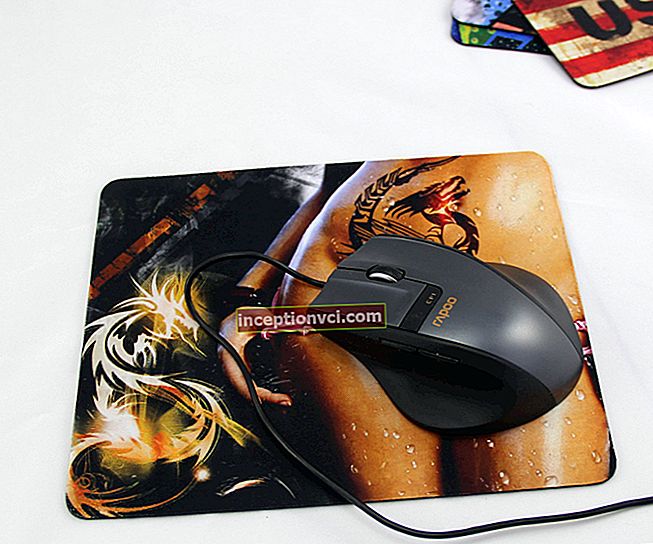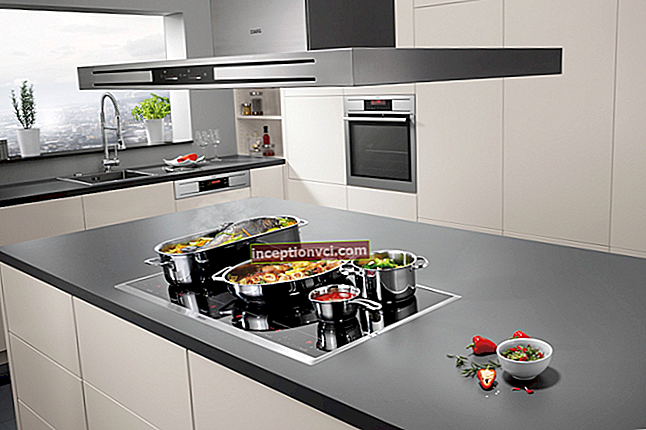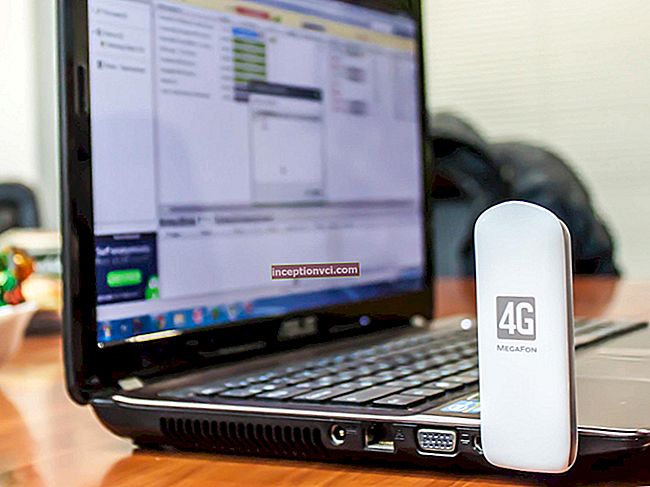Nokia, once the leader of the promising and lucrative smartphone market, has now found itself in a catch-up role. Android and iOS have gone far ahead, and the Finns, left at the trough of their "proprietary" Symbian OS, are trying to catch up. The loud announcement of the release of the Symbian modification called Anna made the mobile community pay attention to the new version of the OS in general and the first device under its control in particular. The new model is Nokia X7, which we will talk about today.
General impressions
The Nokia X7 mobile phone is aimed at people who are fond of music and games. Almost the entire body, with the exception of the front panel and ends, is made of aluminum. It has a 4-inch screen covered with tempered glass and an 8 megapixel camera. At first glance, the phone looks very interesting.

Design
The design of Nokia X7 is rather unusual. From the front, the Nokia X7 looks like an aggressive, brutal Hummer. The back is like a sleek and graceful Alfa Romeo. This combination, oddly enough, looks pretty good, the body of the device as a whole can be called successful. The corners of the body are practically not felt, and only the metal body pleasantly cools the palm of your hand. Due to the beveled edges, the device cannot be called another copy of any model. The weight of the device is 146 grams and will not let you forget which pocket the phone is in. Nevertheless, it is very comfortable in the hands, mainly because of the edges, despite the size and weight. In general, the design of the device turned out to be somewhat unusual, but at the same time attractive.

The only thing that causes confusion is the keys and connectors located on the edges. It is inconvenient to use the keys because of the minimal protrusion above the body, and not every user will dare to open the connector and not the first time. The phone clearly demonstrates how demanding beauty is. The Finns boldly abandoned two of the 3 mechanical buttons that traditionally adorned the front panel of Symbian smartphones. There is only one left, which serves to call the menu and return to the desktop (almost like in the iPhone). The button to turn on the phone and lock the screen is located on the top of the device and has an unusual triangular shape. Also on top is a 3.5 mm headphone jack and a microUSB connector without a cap (oh, Koreans represented by Samsung and LG have already taught us good things - curtains covering this connector).

On the right, actually already on the back (due to the absence of side edges) there are volume control and camera launch buttons, and on the left - slots for microSD and SIM. Both the buttons and the card slots are very inconvenient, and if you (hopefully) have to take out the cards infrequently, it will still be quite difficult to take pictures and adjust the volume.

On the back there is an 8 megapixel camera with LED backlighting, and the front (which has already become a tradition for the company) is practically devoid of controls, except for the multi-function key. Symmetrically, there is a decorative slot for the speaker, under which the light and proximity sensor are hidden.
The central part is occupied by a 4-inch OLED screen with a resolution of 640 x 360 pixels. It is impossible to say anything bad about the display, but the Nokia X7 has nothing to boast about in this regard.
At the bottom there is a slot for the spoken microphone. The second microphone (for recording sound when shooting video) is located to the right of the camera module.

Traditionally, the body of the smartphone cannot be disassembled, the battery, of course, does not come out (I mean, with simple hand movements). The smartphone comes with an 8 GB memory card.
Many users are interested in the number of speakers (4 or 2). There are two of them, and both are located at the bottom of the phone, and the slots at the top are made just for the sake of beauty.
Multimedia
The Nokia X7's screen is undoubtedly something to be proud of. Still - AMOLED-matrix covered with Gorilla Glass. The display size is 87.0 x 49.0 mm, but the resolution is only 640 x 360 pixels. Considering that in flagship solutions of other manufacturers, four-inch screens have a resolution of at least 800 x 480, it is time for Nokia to think about increasing the screen resolution (and with them the dimensions of the interface!

The Nokia X7 has an 8 Mpx camera with dual LED flash, lacking autofocus. The camera shoots quickly, but not always with high quality. Video is recorded at a resolution of 1280 x 720 at 25 frames per second. Despite the sea of all kinds of settings, from the point of view of photo and video, the camera in Nokia X7 is significantly inferior to competitors - flagship devices from other manufacturers.
The stereo speakers are located in the lower corners of the phone, and are covered with stylish grilles. There are the same grilles at the top of the phone, but naturally there are no speakers in them.

Photo and musical possibilities
Nokia phones, regardless of operating system and hardware, have always used a very good camera. Note that the camera in Nokia X7 lacks autofocus, but this does not prevent it from taking good photos, and video can claim to be the best in its class.
Taking portraits with the X7 is a pleasure. The camera handles landscapes and portraits with ease. And you won't be bored during the shooting, because only a Nokia phone is able to play music in the background and take photographs (this trick does not work with video: after turning on the video recording, the music automatically pauses).
A nice bonus to good photographic ability is the quality of sound reproduction (even with regular headphones).
In conclusion, I would like to note the long battery life of the phone, which contributes to the active use of Nokia X7.
Performance
The sluggishness of the device is felt in absolutely everything, especially after modern dual-core monsters with 1 GB of RAM on board. The Nokia X7 has a 680 MHz processor and only 256 MB of RAM. This, alas, is yesterday in the development of mobile technologies. And no matter how much Nokia engineers talk about the efficiency of using system resources, one thing is clear: Lada with a liter engine will not be able to compare with BMW with a four-liter engine. It is sad to realize that Symbian (once the leading mobile OS) in the modern world is a Zhiguli.

Symbian Anna
Users had high hopes for the update of the operating system (Symbian Anna), and not as it was before with the digital index. On the one hand, the interface has become more modern. There are three desktops, integration with social networks, the popular Ovi app store, support for popular video codecs and much more. But if you use all these benefits actively enough, you understand that mkv-video is played with brakes. When writing messages to replace the language layout, you need to delve into the menu several levels deep, configuring wireless networks is quite difficult, so we can conclude that the operating system used is rather unfriendly towards the user.
The new, so heavily advertised version of Symbian OS, named Anna, turned out to be the same dull, familiar Symbian ^ 3. With some cosmetic improvements, such as, for example, indecently rounded icons (not a circle, but not a square either). The user is waiting for all the same three desktops (in modern mobile OS there are at least 7 of them), all the same gloomy standard-form widgets (in Android, widgets could initially take a variety of forms), and the same archaic menu structure (to get to the list installed applications, you need to complete a quest of 3-4 levels, while in normal OS application icons appear in the "root" of the menu).Slow scrolling (literally jerky changes of images) are visible to the naked eye even when working with a standard interface.
From the positive aspects, we highlight the pop-up window that appears in the upper right corner, which opens access to the key settings. But this is just a poor replacement for the status bar in Android.
The situation with the translation of standard menu items is much worse. If earlier we laughed together at the names of menu items in Chinese phones, now the Finns, who have always been famous for their excellent localization, decided to "surpass" the Chinese, providing the novelty with literary pearls. Yes, in the interface of Symbian Anna you will be unpleasantly surprised by "Dsp f-lov" and "Calc-tor" (while for the longer words Communicator and Adobe Reader, a place was somehow mysteriously found); “Here and this ...” (couldn’t it be possible to write the three necessary letters instead of three dots?), “Application manager” and and “Param. Applied. " The crown of enchanting illiteracy is the name of the widget on the desktop - "Phone settings." (it is not clear what kind of bodies we are talking about). How not to remember the saying - "As it comes around, it will respond"? Finns, who regretted letters for the normal spelling of standard names of menu items, will certainly encounter users who may regret the money for purchasing this smartphone.

Indeed, the prospects for the novelty on the market are very vague. Competitors are not asleep, and have long presented many worthy alternatives in this price segment. Nokia X7maybe a good gadget for loyal fans of Nokia, as well as for those who like the unusual design of an outdated device. Alas, Android and iOS have already gone very far from Symbian, and they are developing in practice, not in words. In 2009 Nokia X7 could blow up the market, now the smartphone has no chances even theoretically.









